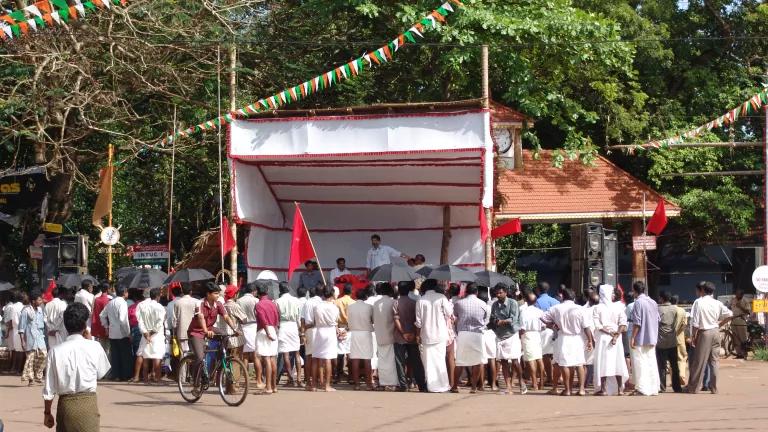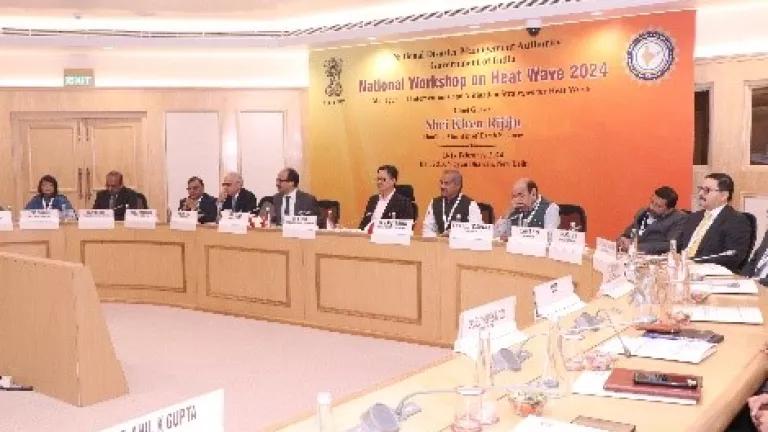Responding to Deadly Heat, Uttar Pradesh Drafts Urban Cooling Policy
With record breaking temperatures taking a devastating toll on human health, the state of Uttar Predesh (UP) has prepared a long-term heat resilience plan.

The Uttar Pradesh Urban Cooling Policy Workshop hosted by the Department of Housing and Urban Planning, Department of Environment, Forests and Climate Change (EF&CC), Natural Resources Defense Council (NRDC), and other knowledge partners
Smriti George
Co-authored with Sameeha Hossain, NRDC Intern and Graduate Student at the Yale School of Public Health, with contributions from Ashish Jindal, and Gerry George of NRDC India
With record breaking temperatures taking a devastating toll on human health, the state of Uttar Pradesh (UP) has prepared a long-term heat resilience plan, which was presented in a June 19th, 2024 workshop. Hosted by the Department of Housing and Urban Planning, Department of Environment, Forests and Climate Change (EF&CC), Natural Resources Defense Council (NRDC), and other knowledge partners, the Uttar Pradesh Urban Cooling Policy Workshop identified several concrete steps the state is taking to strengthen its response against heat. Premature heat-related deaths due to heat waves, intensified by global warming, are becoming more of a heartbreaking reality in India, pushing public health systems and infrastructure to their limits. Insights from UP can provide valuable lessons for other Indian states coping with extreme heat as well.
UP has drafted a new urban cooling policy
Shri Nitin Ramesh Gokarn Additional Chief Secretary of the Housing and Urban Planning Department presented the new policy, which aims to mitigate the impacts of heat stress by enhancing adaptive measures and resilience-building through mandates such as cool roof applications across various building types. Cool roofs provide numerous health and climate benefits because they are designed to reflect more sunlight and absorb less heat than standard roofs. By reducing the amount of heat transferred into buildings, cool roofs keep indoor temperatures lower than conventional roofs, which improves comfort and often reduces the need for air conditioning and other cooling mechanisms.
With their paved surfaces and lack of green areas and tree cover, cities, in particular, often bear the brunt of extreme heat due to the Urban Heat Island Effect, a point that Shri Narendra Bhooshan, Principal Secretary for the Departments of Energy, Renewable Energy, Science & Technology, emphasized at the workshop. Energy efficiency building codes necessitating passive cooling designs are another effective tool to improve thermal comfort while saving energy, noted Shri Ashish Tiwari, Secretary EF&CC. As a precursor to the policy launch, the UP government has piloted cool roofs on an affordable housing complex in Lucknow. The pilot by Mahila Housing Trust (MHT) showed marked improvements in indoor temperature following the implementation of cool roofs.

MHT Pilot Cool Roof Implementation
Key features of the draft Uttar Pradesh Urban Cooling Policy
The Uttar Pradesh Urban Cooling Policy includes a phased implementation approach, the integration of cooling solutions into building designs, monitoring mechanisms to ensure effective implementation, and partnerships.
- The policy’s phased approach will begin with implementing cooling technologies in government buildings and high-impact sectors, like educational and healthcare facilities, before expanding to commercial and residential areas.
- The policy promotes incorporating passive and energy-efficient cooling solutions into building designs to ensure that all future infrastructure is up to date with the policy’s tenants. Panelist Dr. Ritu Gulati highlighted the need for incentives and subsidies to encourage the adoption of these measures by architects and other relevant parties.
- The policy includes robust monitoring mechanisms, including a comprehensive public dashboard, to track progress and ensure quality. Panelist Shri G.S. Naveen Kumar emphasized the importance of monitoring policy adoption by architects, developers, and other stakeholders. He encouraged collaboration to enhance transparency and accountability.
- The policy fosters collaboration with governmental bodies, private sectors, research institutions, and local communities to ensure coordinated implementation.
To be most effective, urban cooling requires an integrated approach. The policy relies on increasing cool surfaces, green areas, and water bodies. The comprehensive approach that the UP policy takes towards cooling will be instrumental in shaping the state’s response to heat management. Cities in UP are already taking measures on cooling. For example, the city of Varanasi has incorporated green measures into footpaths and rejuvenated ponds disconnected from river bodies. The city of Raebareli has finalized its plan to incorporate significant green cover across townships and urban areas. Additional cities in UP are also developing heat action plans and implementing cooling solutions.

Panelists speak during the moderated discussion at the UP Urban Cooling Workshop
Smriti George
Speaking at the workshop, Shri Manoj Singh, Additional Chief Secretary EF&CC, called for a collaborative approach for response to extreme heat. In this spirit, key partners present at the workshop pledged to work together with NRDC, AKTU, UPNEDA signing an MoU. NRDC, along with NDMA and other knowledge partners, is planning more such workshops in Uttar Pradesh and other states in India in the coming days. The collaborative nature and innovative goals of UP’s policy seem to promise a cooler, more sustainable future for the residents. NRDC and partners are committed to supporting UP in advancing and implementing the state’s vision on urban cooling.





